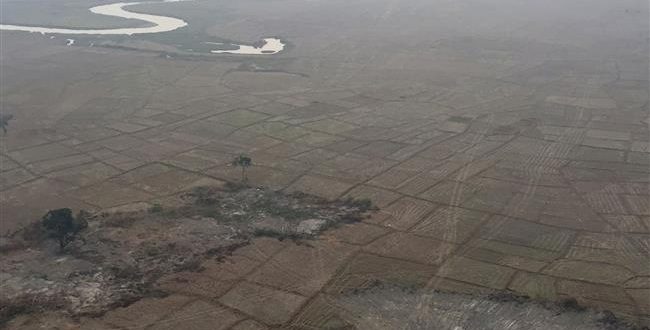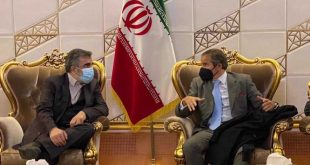New aerial pictures of Rakhine state appear to show several bulldozed settlements of the persecuted Rohingya people, giving rise to concerns that Myanmar is wiping out history of the Muslim minority.
The haunting photos, recently posted on the Twitter account of the European Union ambassador to Myanmar, Kristian Schmidt, show a scarred territory with large patches of leveled land.
Villages incinerated during the Myanmar military crackdown now appear to have been completely bulldozed, devoid of all structures and even trees.
Chris Lewa, head of the NGO the Arakan Project, which has worked for years with Rohingya in Rakhine state, said that “the Rohingyas are shocked to see their villages razed.”
“The Rohingya have the feeling that they (the military) are doing away with the last traces of their presence in the region,” Lewa added.
They also fear the upcoming rainy season will further wash away any signs of their past lives, she noted.
Photos posted on social media after a diplomatic tour of the conflict zone in Rakhine state last week appear to back up speculation that the recent crackdown against the Rohingya is a push to rid the country of the minority for good.

Myanmar’s Social Welfare Minister Win Myat Aye has, however, defended the new demolition, arguing the bulldozing was part of a plan to “build back” villages to a higher standard than before.
“We are trying to have the new village plan,” the minister said, adding, “When they come back they can live in their place of origin or nearest to their place of origin.”
The minister said it was taking time because of a labor shortage sparked by the Rohingya exodus and that the government planned to pay returnees to help rebuild their own homes.
Last year, the United Nations human rights office said efforts were underway to “effectively erase signs of memorable landmarks in the geography of the Rohingya landscape and memory.”
The crimes against the Rohingya have upped pressure on de facto ruler Aung San Suu Kyi to condemn the army. Suu Kyi has, however, done virtually nothing to stop the crimes.
Suu Kyi’s government has snubbed and obstructed UN officials who have sought to investigate the situation and it has prevented aid agencies from delivering food, water and medicines to the refugees.

In a new wave of violence, Myanmar’s forces have been attacking Rohingya Muslims and torching their villages in Rakhine since October 2016. The attacks have seen a sharp rise since August 25, following a number of armed attacks on police and military posts in the troubled western state.
Since August, a military crackdown on the Rohingya has forced nearly 700,000 members of the one-million-plus-strong community to flee their homes in Rakhine and head to Bangladesh.
Despite the campaign against the Rohingya, Myanmar and Bangladesh agreed late last year to repatriate all the newly-arrived refugees.
The implementation of that agreement was supposed to begin last month, but it was postponed, with no new date set, amid fears that the refugees may be coerced into leaving.
Refugees are still entering Bangladesh with harrowing tales of abuses, including mass rapes, executions and torture, by Buddhist mobs and the military. Many have lost their homes to arson attacks in Rakhine, where rights groups say entire Rohingya settlements have been burned to the ground.
Rights campaigners also say the systematic destruction of hundreds of villages, mosques and property is effectively rubbing out the Rohingya’s ties to their ancestral lands.
 WILAYAH NEWS VOICE OF THE GLOBAL AWAKENING
WILAYAH NEWS VOICE OF THE GLOBAL AWAKENING






